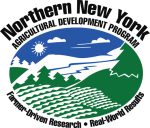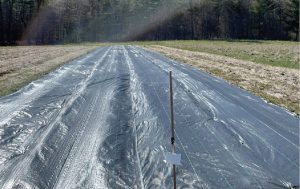 May 9, 2025. The New York State Budget has been approved and includes $300,000 in funding for the Northern New York Agricultural Development Program (NNYADP).
May 9, 2025. The New York State Budget has been approved and includes $300,000 in funding for the Northern New York Agricultural Development Program (NNYADP).
We thank NYS Assemblyman Billy Jones and NYS Assembly Agriculture Committee Chair Donna Lupardo for their leadership in securing this funding for the NNYADP. The funding will provide for critical on-farm research in support of the agricultural industry that is a major contributor to NNY’s economy and quality of life.




 Funding for this project and others is made possible by the support of the Northern New York Agricultural Development Program by the New York State Legislature through the New York State Assembly. The funding is administrated by the NYS Department of Agriculture and Markets.
Funding for this project and others is made possible by the support of the Northern New York Agricultural Development Program by the New York State Legislature through the New York State Assembly. The funding is administrated by the NYS Department of Agriculture and Markets.